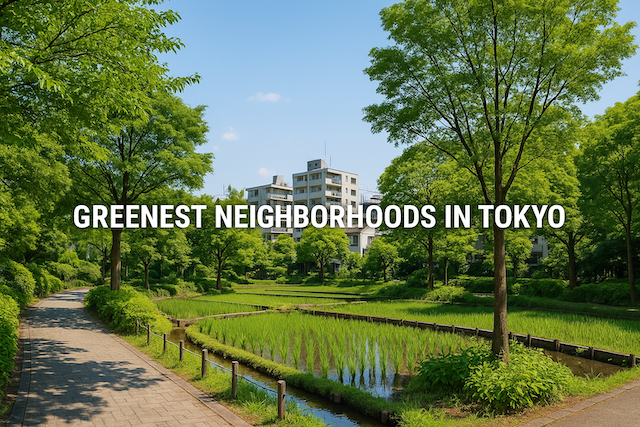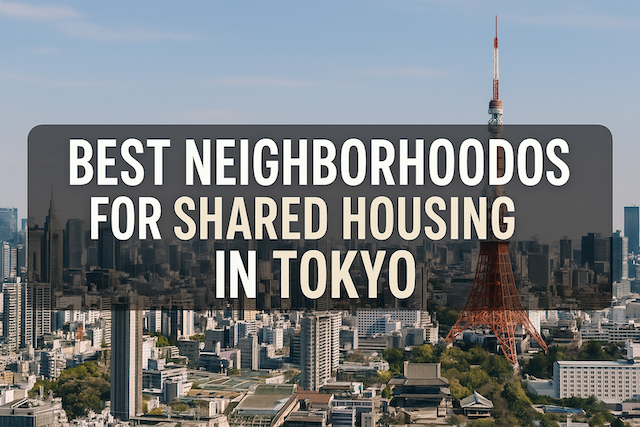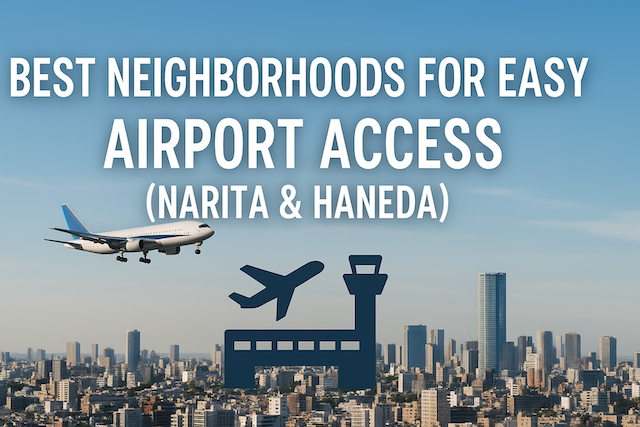Greenest Neighborhoods in Tokyo
Tokyo, one of the world’s busiest megacities, might not be the first place you think of when imagining greenery and nature. However, despite its towering skyscrapers and neon lights, Tokyo is also home to countless lush parks, serene gardens, and tree-lined neighborhoods that offer a perfect balance between urban living and tranquility. Whether you’re looking for a quiet residential area surrounded by green spaces or a modern district with easy access to parks, these are the greenest neighborhoods in Tokyo worth considering.
1. Meguro: A Green Escape in Central Tokyo
Meguro strikes a beautiful balance between modern urban convenience and natural calm. The area is famous for its cherry blossom–lined Meguro River, which transforms into a pink tunnel every spring. Residents enjoy peaceful walks along the riverbanks throughout the year, as well as easy access to parks like Komaba Park and Rinshinomori Park.
Meguro’s streets are lined with low-rise apartments, cozy cafés, and stylish restaurants, creating a relaxed environment while still being just a few train stops from Shibuya or Shinjuku. It’s a perfect choice for nature lovers who don’t want to sacrifice city access.
Highlights:
-
Meguro River Walkway
-
Komaba Park
-
Rinshinomori Park
-
Trendy but quiet residential zones
2. Setagaya: Tokyo’s Leafy Suburban Oasis
Setagaya is often considered Tokyo’s greenest ward. It’s home to large residential areas filled with trees, gardens, and parks. Komazawa Olympic Park and Todoroki Valley stand out as its two most iconic natural spots.
Komazawa Olympic Park offers wide lawns, jogging tracks, and recreational facilities, while Todoroki Valley is Tokyo’s hidden canyon—a lush, forested escape with a peaceful river running through it. Residents can enjoy weekend strolls that feel far removed from urban life.
Setagaya’s family-friendly environment and slower pace make it one of the best choices for those seeking green surroundings and a strong sense of community.
Highlights:
-
Todoroki Valley (the only natural valley in central Tokyo)
-
Komazawa Olympic Park
-
Setagaya Park
-
Excellent for families and cyclists
3. Musashino and Kichijoji: The Perfect Urban-Nature Balance
Kichijoji, located in Musashino City, consistently ranks as one of Tokyo’s most desirable places to live—and for good reason. At its heart lies Inokashira Park, one of Tokyo’s most beloved green spaces. The park includes a large pond, boat rentals, walking paths, a small zoo, and even a shrine.
Beyond the park, Kichijoji offers vibrant shopping streets, cafés, and cultural spots. It’s a rare place where you can enjoy both a lively social scene and immediate access to nature. This makes it especially popular among young professionals and creative residents.
Highlights:
-
Inokashira Park and Zoo
-
Trendy yet laid-back lifestyle
-
Easy train access to Shibuya and Shinjuku
4. Shinjuku Gyoen Area: Green Heart of the Metropolis
While Shinjuku is famous for its skyscrapers and nightlife, it also hides one of the most magnificent parks in Japan—Shinjuku Gyoen National Garden. The neighborhoods near this park, particularly Shinjuku Gyoemmae and Sendagaya, offer an ideal living environment for those who want greenery within walking distance of central Tokyo.
Shinjuku Gyoen combines French, English, and Japanese landscape styles, offering vast lawns, ponds, and cherry blossom trees. Residents nearby enjoy peaceful morning walks and the unique opportunity to live next to a historical green landmark.
Highlights:
-
Shinjuku Gyoen National Garden
-
Convenient yet calm environment
-
Access to major train lines and city amenities
5. Bunkyo: Gardens and Historic Greenery
Bunkyo Ward is rich in traditional gardens and greenery woven into its academic and cultural atmosphere. It’s home to Koishikawa Korakuen, one of Tokyo’s oldest and most beautiful Japanese gardens, and Rikugien Garden, known for its seasonal colors and traditional tea houses.
The area has a quiet, elegant character—partly due to its proximity to universities like the University of Tokyo. Residential zones are peaceful, with plenty of small parks and tree-lined streets. Bunkyo is perfect for those who appreciate a mix of history, culture, and nature.
Highlights:
-
Koishikawa Korakuen Garden
-
Rikugien Garden
-
Historic atmosphere with academic charm
6. Suginami: Community Parks and Tree-Lined Streets
Suginami Ward is another green residential area west of central Tokyo. The district is filled with medium-density housing, neighborhood parks, and scenic walking routes. Zenpukuji River Green Space and Wadabori Park provide residents with scenic jogging and cycling paths surrounded by lush vegetation.
Suginami’s strong community feel and reasonable rent prices also attract families and professionals who want to live near nature but within Tokyo’s 23 wards.
Highlights:
-
Zenpukuji River Green Path
-
Wadabori Park
-
Affordable, green suburban vibe
7. Nakano: Compact but Green
Nakano might be known for its shopping streets and pop culture, but it also hides surprising pockets of green. Parks like Egota-no-Mori and Heiwa-no-Mori offer quiet escapes just minutes away from Nakano Station.
This balance makes Nakano a great place for young professionals who want to live close to entertainment hubs while still enjoying daily access to green spaces.
Highlights:
-
Egota-no-Mori Park
-
Heiwa-no-Mori Park
-
Urban convenience with greenery nearby
8. Chofu and Fuchu: Gateway to Tama’s Natural Parks
For those who prefer even more open space, Chofu and Fuchu—just beyond Tokyo’s central area—are ideal. These neighborhoods are surrounded by large parks and the Tamagawa River, offering cycling routes, picnic areas, and wide-open skies.
Inokashira Park extends partially into Chofu, while Musashino no Mori Park and Ajinomoto Stadium Park provide additional recreational space. The quieter, suburban lifestyle combined with abundant green scenery makes these areas popular with families and retirees.
Highlights:
-
Tamagawa River walking and cycling routes
-
Musashino no Mori Park
-
Relaxed suburban environment
9. Minato Ward (Akasaka, Azabu, Shirokane): Urban Green Luxury
Minato Ward may be Tokyo’s financial and diplomatic center, but it’s also remarkably green. Areas like Shirokane, Hiroo, and Akasaka feature large tree-lined streets, private gardens, and proximity to parks like Arisugawa-no-Miya Memorial Park and Shiba Park.
These areas are known for upscale residences that blend luxury with natural surroundings. Living here means you can walk to cafes, embassies, and green parks—all within central Tokyo.
Highlights:
-
Arisugawa-no-Miya Memorial Park
-
Shiba Park and Tokyo Tower views
-
Elegant, peaceful, and international community
10. Nerima: The Agricultural Heart of Tokyo
Nerima is often called Tokyo’s “vegetable garden.” It’s one of the city’s greenest wards, featuring farmland, parks, and a slower suburban pace. Hikarigaoka Park, one of Tokyo’s largest, is located here—offering sports fields, forests, and open spaces ideal for families.
Nerima’s wide roads, open spaces, and fresh air make it feel worlds apart from the city center, even though it’s still within Tokyo.
Highlights:
-
Hikarigaoka Park
-
Agricultural zones and open-air markets
-
Affordable housing with a countryside atmosphere
11. Hino and Tachikawa: Green Living Beyond Central Tokyo
Further west, in western Tokyo, neighborhoods like Tachikawa and Hino are surrounded by vast parks and nature reserves. Showa Kinen Park in Tachikawa is a massive national park with flower gardens, cycling roads, and picnic areas that stretch for kilometers.
These areas offer a suburban lifestyle with a strong connection to nature—ideal for people who work remotely or prefer spacious living.
Highlights:
-
Showa Kinen Park
-
Affordable, family-oriented environment
-
Convenient train access to central Tokyo
Conclusion: Tokyo’s Green Future
Tokyo may be known for its innovation and urban density, but it’s also a city deeply connected to nature. From the quiet trails of Todoroki Valley to the elegance of Rikugien Garden and the open skies of Tachikawa, every neighborhood offers a different type of greenery.
If you’re seeking balance between modern life and natural surroundings, neighborhoods like Setagaya, Kichijoji, and Bunkyo stand out as ideal. On the other hand, those who value space and affordability can find serenity in Nerima or Chofu.
In short, Tokyo’s green neighborhoods prove that even in one of the world’s busiest cities, nature is never far away.
FAQs
What makes a Tokyo neighborhood “green” for everyday living?
A green neighborhood blends abundant public parks, tree-lined streets, riverside or valley walks, and low to mid-rise residential pockets that reduce noise and heat. In practice, this looks like quick access to sizable parks (e.g., Komazawa Olympic Park or Inokashira Park), everyday pocket parks, shaded walking routes, and good cycling potential. Green areas also tend to have calmer traffic patterns, local cafés, and schools that anchor a community-centric pace.
Which Tokyo wards are generally considered the greenest?
Setagaya, Suginami, and Nerima are often cited for extensive residential greenery and park networks. Bunkyo stands out for classic gardens (Rikugien, Koishikawa Korakuen). Minato’s Hiroo, Shirokane, and Azabu offer upscale, tree-lined streets near parks like Arisugawa and Shiba. Western suburban cities such as Musashino (Kichijoji), Chofu, and Tachikawa bring expansive parks and riverside routes while maintaining efficient rail links to central Tokyo.
How does Setagaya compare with other green districts?
Setagaya feels like a leafy “suburban inside the city.” Its highlights include Todoroki Valley’s natural ravine walk and Komazawa Olympic Park’s multi-use paths and fields. Compared with central wards, Setagaya trades high-rise density for low-traffic residential lanes, frequent playgrounds, and a strong family vibe, while still connecting to Shibuya and central hubs quickly via Tokyu lines and buses.
Why is Kichijoji (Musashino City) so popular among nature lovers?
Kichijoji’s magnet is Inokashira Park—a large, lake-centered green where residents jog, picnic, and rent boats. Its perimeter blends directly into daily life: cafés, indie shops, and cultural venues are steps from the trees. This immediate “park-to-town” transition creates a rare balance—urban buzz when you want it and tranquil nature when you need it, all on the JR Chuo and Keio Inokashira lines.
Is Shinjuku actually green if it’s full of skyscrapers?
Near the skyscraper district sits Shinjuku Gyoen National Garden, one of Tokyo’s premier parks with Japanese, English, and French formal zones and vast lawns. Living around Shinjuku Gyoemmae or Sendagaya means morning walks and seasonal blossoms within minutes, while retaining express access to the city’s densest transport node. It’s a “have-your-cake-and-eat-it” option for park proximity and urban convenience.
What distinguishes Bunkyo’s greenery from other wards?
Bunkyo’s strength is historical and curated greenery. Rikugien and Koishikawa Korakuen are classic landscaped gardens with ponds, tea houses, and seasonal maple and cherry displays. The ward’s academic atmosphere (near the University of Tokyo) brings quiet streets and small neighborhood parks, ideal for residents who value cultural depth and contemplative green spaces over sprawling athletic fields.
How green are Suginami and Nakano for day-to-day routines?
Suginami offers Zenpukuji River Green Space and Wadabori Park—excellent for joggers and cyclists—plus many pocket parks woven into residential blocks. Nakano complements its pop-culture core with Egota-no-Mori and other mid-size parks that deliver shade and open lawns. Both wards suit residents who want local greenery without giving up quick rail access to Shinjuku and central Tokyo.
What makes Minato’s “urban green luxury” appealing?
Minato combines embassy-lined avenues, well-kept sidewalks, and close-by parks like Arisugawa-no-Miya and Shiba Park. Neighborhoods such as Hiroo, Azabu, and Shirokane pair tranquil residential streets with premium supermarkets, international schools, and medical clinics. It’s ideal if you want polished streetscapes, walkable daily needs, and cosmopolitan amenities alongside mature trees and manicured greenery.
Why is Nerima called Tokyo’s “vegetable garden”?
Nerima retains agricultural plots and wider residential streets, providing a semi-rural feel within the 23 wards. Hikarigaoka Park—among Tokyo’s largest—adds sports grounds, wooded trails, and expansive lawns. If you crave big-sky views, weekend cycling, and calmer traffic, Nerima’s blend of farmland remnants and large parks offers a refreshing alternative to the urban core.
Are Chofu and Fuchu good choices for space and nature?
Yes. Both border long stretches of the Tamagawa River, ideal for cycling, jogging, and picnics. Musashino no Mori Park and nearby recreational facilities expand your weekend options. These cities deliver roomier housing, quieter streets, and green corridors while keeping you rail-connected to Shinjuku, Shibuya, or central Tokyo for work and leisure.
What’s special about Tachikawa and Hino in western Tokyo?
Tachikawa’s Showa Kinen Park is a national-scale destination with seasonal flower fields, lakes, and kilometers of cycling paths. Hino provides calm residential neighborhoods and access to river and greenbelt networks. Both areas suit families and remote workers who prioritize space, fresh air, and outdoor recreation, with the Chuo Line bringing central Tokyo within practical commuting range.
How can I evaluate “green access” before renting?
Map walking times to at least two parks (one pocket park within five minutes and one major park within 15–20 minutes). Trace shaded walking routes, check noise at different times of day, and look for riverside or valley paths. Confirm bike parking, supermarket walkability, and school/clinic proximity. A quick sunrise or late-evening visit reveals traffic levels, lighting, and real neighborhood rhythm.
Is living near major parks more expensive?
Often, yes—especially around curated or centrally located parks (e.g., Shinjuku Gyoen edges or Minato’s garden-adjacent streets). However, value persists in secondary green belts: Suginami’s river paths, Setagaya’s quieter pockets, or Nerima’s Hikarigaoka-adjacent areas. Prioritize the specific park experience you’ll use most (jogging loops, playgrounds, lawns) rather than paying a premium for a famous name you’ll rarely visit.
What’s a practical shortlist for newcomers seeking greenery?
For central convenience with major parks, consider Shinjuku Gyoen-side neighborhoods or Bunkyo’s garden belt. For leafy residential living, explore Setagaya or Suginami. For a vibrant park-town vibe, target Kichijoji (Musashino). For more space and riverside life, look at Chofu or Fuchu. For big parks and calmer streets within the 23 wards, add Nerima (Hikarigaoka) to your viewing list.


![Where to Live in Tokyo for Couples [2025-2026 Guide]](https://tokyorelocationguide.com/wp-content/uploads/2025/10/ChatGPT-Image-Oct-17-2025-04_22_42-PM.png)


![Where to Live in Tokyo for Singles [2025–2026 Guide]](https://tokyorelocationguide.com/wp-content/uploads/2025/10/ChatGPT-Image-Oct-17-2025-04_03_58-PM.png)
![Where to Live in Tokyo for Expats [2025-2026 Guide]](https://tokyorelocationguide.com/wp-content/uploads/2025/10/ChatGPT-Image-Oct-17-2025-03_50_34-PM.png)
